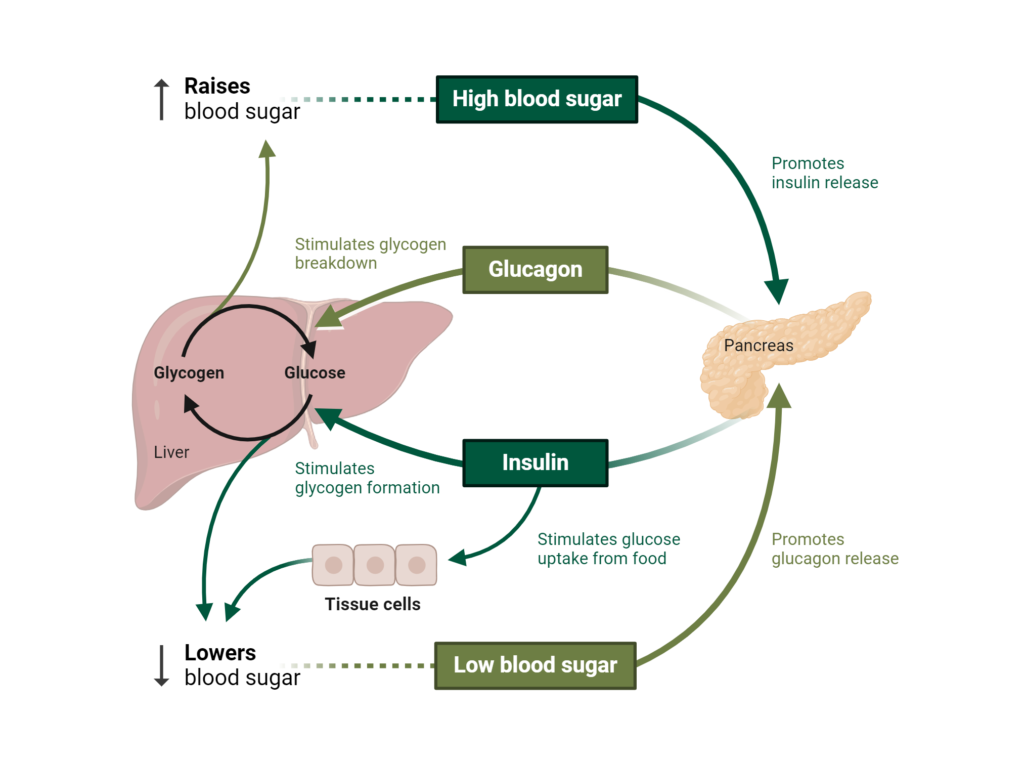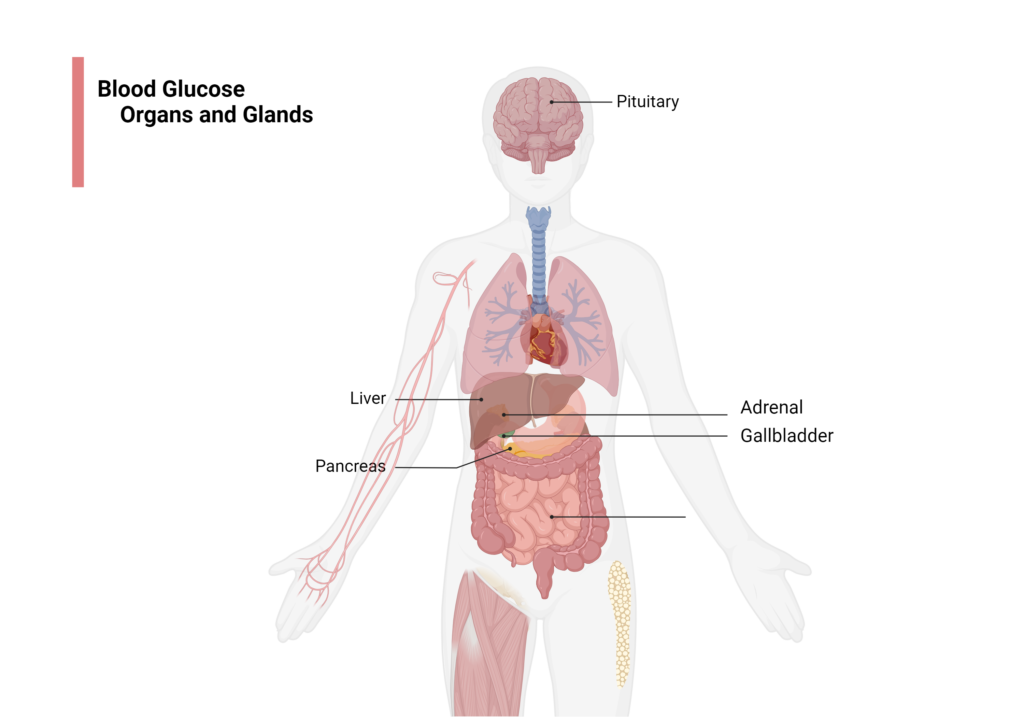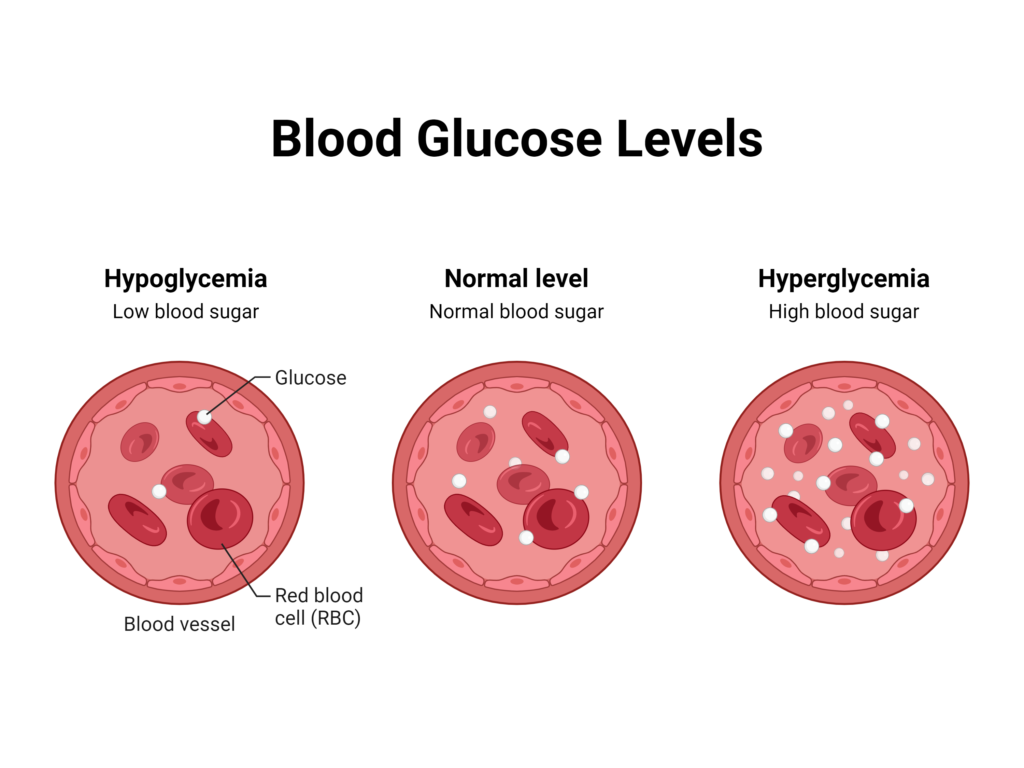 Bookmark
Bookmark Do All Foods Have Glucose? Exploring the Impact of Glucose in Your Diet
Let’s face it, humans have a complex relationship with sugar. Sugar serves dual purposes, such as being an energy source for daily function. Additionally, it’s an ingredient found in comfort foods, candy, and celebratory desserts. Despite its enticing flavor profile, it’s important to consider the unique impact sugar has on our bodies and the potential detriments of consuming too much added sugar. Understanding the essential facts about sugar can help guide health-conscious individuals on what constitutes healthy intake versus over consumption.
In this article, we’ll explore the impact of sugar on the body and the definition of glucose. You’ll learn the importance of glucose as a form of sugar in the body and be able to answer the question do all foods have glucose? We’ll uncover the various sources of glucose found in the foods we eat and considerations for effectively managing blood glucose.
Introduction to Carbohydrates
Carbohydrates consist of a network of sugar molecules known as monosaccharides, or simple sugars. There are three simple sugars found in food: glucose, fructose and galactose, and various combinations of these monosaccharides make up all other sugars, starches and plant fibers in the diet. Dietary fiber passes through the body undigested, but when other carbohydrates are consumed, the body quickly starts breaking them down for absorption.
Complex carbohydrates, such as starches, are first acted on by the enzyme amylase. Amylase is found in saliva but is also produced by the pancreas and secreted into the small intestines. Amylase breaks down complex carbohydrates into smaller units of tri- and disaccharides.
Enzymes and Carbohydrate Breakdown
Common disaccharides include sucrose and lactose. Sucrose is commonly called “table sugar” but is also present in foods like sugar cane, sugar beets, apples, oranges, carrots, and other fruits, vegetables, and their juices. It is broken down by an enzyme called sucrase.
Lactose is known as “milk sugar” and is present in milk, cheese, yogurt, and other dairy products. Lactose is broken down by an enzyme called lactase, also known as β-galactosidase.
A common condition caused by a lack of lactase is lactose intolerance. Individuals with this condition are unable to break down lactose into its component monosaccharides. These undigested molecules are fermented by gut bacteria which results in gas and bloating. They also draw water into the intestines, through osmosis, leading to symptoms like diarrhea.
Relationship Between Glucose and Food
Eventually, most starches and sugars are broken down into glucose. Glucose is the primary energy source in the body and provides energy to our cells for their various functions, growth, and maintenance. It can be obtained from the breakdown of more complex carbohydrates and disaccharides, but glucose itself can also occur naturally in some foods. The most concentrated, whole food source of glucose is honey, followed by dried fruits such as dates, apricots, raisins, currants, cranberries, prunes, and figs.
When glucose is consumed as part of a whole food like fruits and vegetables, it comes along with components found in the whole food matrix. Components like fiber, fats, and/or phytochemicals can slow the absorption of glucose into the bloodstream. The whole food matrix also provides vitamins, minerals and antioxidants that contribute to positive health effects.

Adapted from “Regulation of Blood Glucose”, by BioRender.com (2024). Retrieved from https://app.biorender.com/biorender-templates
Impact of Whole Foods vs. Added Sugars
Added sugars, on the other hand, play a significant role in the incidence of obesity, type 2 diabetes, and heart disease. Sugary beverages, candy, desserts, and pastries contain high amounts of sucrose and high fructose corn syrup.
Fructose is treated by the body a bit differently than glucose, being primarily processed by the liver for storage as glycogen and fat. It is found naturally in honey, fruits, and vegetables, but half of all added sugars in the American diet come from high fructose corn syrup in found in processed foods.
The Dietary Guidelines for Americans 2020-2025 recommends that added sugar should contribute no more than 10% of total calories to the diet, which for a 1,500-calorie diet equates to 9 teaspoons per day. Consider that a standard 12-ounce soda contains 10 teaspoons added sugar.
Impact of Food on Blood Sugar Levels
Foods like noodles, rice, and most breads and breakfast cereals raise blood sugar quickly, while foods like lentils, beans and whole, unprocessed grains raise blood sugar more slowly. We refer to this as the glycemic effect. Foods that are high on the glycemic index will raise blood sugar quickly, while foods that are low on the glycemic index raise blood sugar more slowly.
Role of the Pancreas in Blood Sugar Regulation
Besides its role in producing digestive enzymes, the pancreas plays a key role in maintaining stable blood sugar levels. When glucose enters the blood stream, the pancreas releases a hormone called insulin. Insulin’s function is like a key, in that it unlocks the cells and allows glucose to enter. It manages the rising blood sugar level by moving glucose into the cells to be utilized for energy. When glucose is consumed in amounts above what is required for immediate energy needs, the remainder is stored in the muscles and liver as glycogen. However, the body’s capacity to store glycogen is limited, so excess glucose is converted to triglycerides and stored in fat tissue.
As your cells absorb glucose, the levels in the bloodstream begin to fall. When levels drop below a certain threshold, the pancreas will start producing a hormone called glucagon, which signals the liver to start releasing stored glucose from glycogen, or to synthesize new glucose. Under normal conditions, this feedback system ensures that your blood sugar levels never drop to a dangerously low level, and never rise too high.

Adapted from “Regulation of Blood Glucose”, by BioRender.com (2024). Retrieved from https://app.biorender.com/biorender-templates
Health Consequences of Dysregulated Blood Glucose
When this feedback loop is working properly, one’s blood sugar levels are maintained within a narrow range, rising after a meal, and returning to homeostasis within a few hours, and prior to the next meal. If blood sugar levels remain high due to insufficient insulin production or the inability of cells to respond to insulin (insulin resistance), the consequences range, from fatigue, headache, and lack of focus to coma and death, if severe.
Likewise, if blood sugar levels fall too low due to excessive insulin production, or failure of the liver to either release glucose from storage or produce new glucose, the body will respond by releasing stress hormones: cortisol and adrenaline. Symptoms can occur from the adrenaline itself (tremors, palpitations, anxiety, hunger, sweating), or from lack of glucose in the brain (confusion, fatigue, seizure, coma, or even death).
Diabetes is a condition where there is dysregulation of blood glucose levels. Type I Diabetes is characterized by an inability of the pancreas to secrete insulin. Type II Diabetes is either an inability of the pancreas to produce enough insulin or an inability of the cells to respond to the signal of insulin. If untreated, both types can lead to elevated blood glucose levels, which over time is associated with a whole host of negative health consequences like cardiovascular disease, nerve damage, kidney damage and blindness.

Adapted from “Regulation of Blood Glucose”, by BioRender.com (2024). Retrieved from https://app.biorender.com/biorender-templates
Importance of Balancing Glucose Intake for Optimal Health
Glucose is essential to life, impacting our energy levels and overall well-being. But it’s also very easy to overconsume glucose from snacks and sugary beverages. Whether one is looking to maintain stable blood sugar levels or fuel their body for physical activity, it’s important to be aware of the different sources of glucose, and other food components that come along with it. Maintaining balance in the diet is key to fulfilling energy needs without risking health issues.
Did you know Wholistic Matters is powered by Standard Process? Learn more about Standard Process’ whole food-based nutrition philosophy and where to buy.











